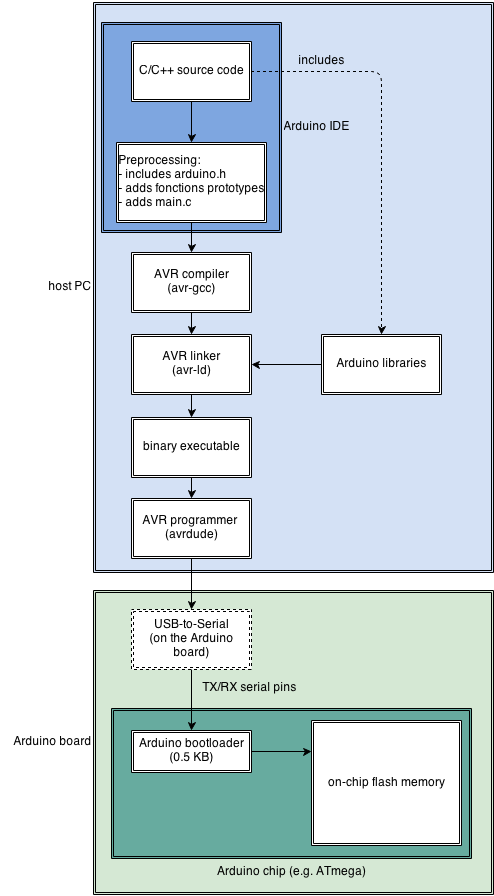Arduino under the hood
This page collects bits of information that I found useful for my own needs, regarding the way an Arduino program is actually compiled, loaded on the board, and how it behaves at runtime
Compilation & load process
A simplified view of the build and load process is as follows:

Memory model
Most arduino boards have three kinds of memory on board:
- EEPROM (non-volatile) to store e.g. configuration info; 1KB on the Arduino Uno
- Flash (non-volatile) to store program binary; 32 KB on the Arduino Uno
- SRAM (volatile) to store variables during program execution; 2KB on the Arduino Uno
These are relatively small, but a good fit for the typical usage scenarios of an Arduino. I did face a few cases where I ran out of SRAM, and it bites real hard since the behavior of the chip then becomes quite weird. You would expect it to just crash/freeze, but sometimes it doesn’t and just produces unexpected behaviors. Since then, I have made an habit of specifically checking how much SRAM I am currently using, to figure out what kind of margin I have left at any time during development.
Here is the code snippet I borrowed to do this:
int freeRam () {
extern int __heap_start, *__brkval;
int v;
return (int) &v - (__brkval == 0 ? (int) &__heap_start : (int) __brkval);
}
A good tip to spare some SRAM is to store all the large read-only buffers in Flash instead. This is possible via the PROGMEM keyword. For example, I used it in the arduino code for my LEDMatrixStrip:
prog_char alphabet[][8] PROGMEM = {
<large data set here....>
}
